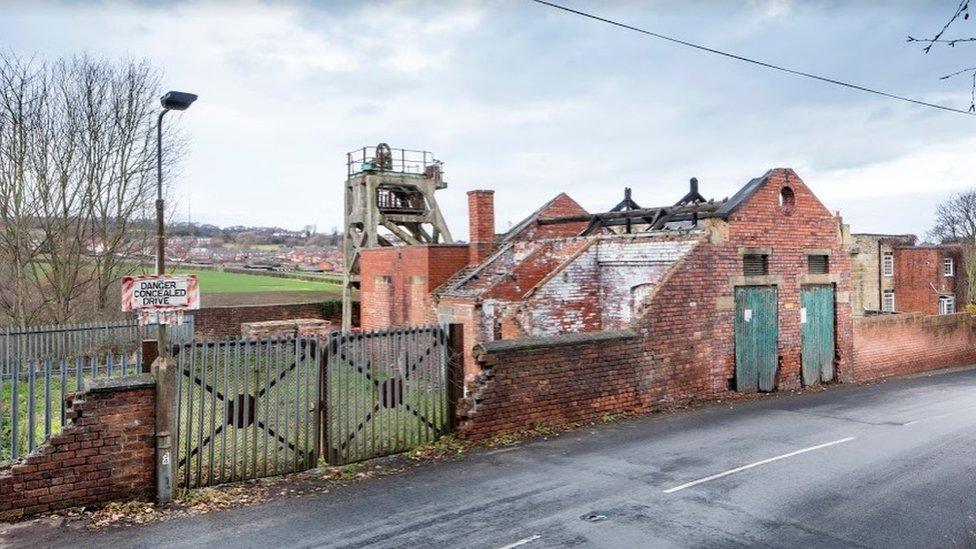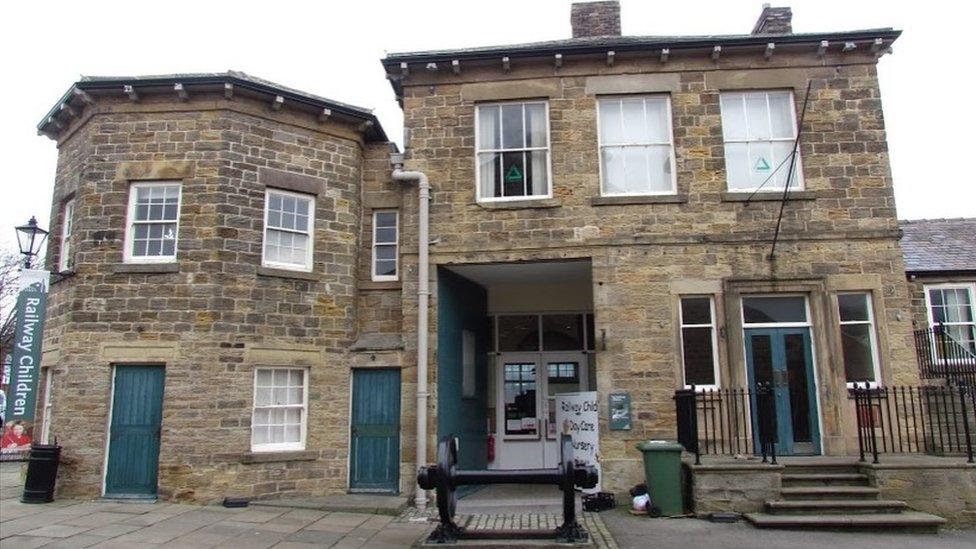Elsecar industrial heritage marked by new listings
- Published

Hemingfield Colliery was developed in the 1840s by the 5th Earl Fitzwilliam and remained in operation until 1920
A former ironworks and colliery are among 16 sites given special status to mark the industrial importance of a South Yorkshire village.
Six sites in Elsecar, near Barnsley, have been listed for the first time and others have gained upgraded protection.
Elsecar was originally built by the Earls Fitzwilliam in the 1700s and was turned into a model industrial village.
Historic England said it was "remarkable" so much of the village's heritage had survived.
With its mines and ironworks, Elsecar was an internationally important industrial centre in the late 18th and 19th Centuries.

The former Elsecar Ironworks was built in 1795 and was one of two created in the area by the Fitzwilliam family

In 1859 it produced iron plating for the Royal Navy's first ironclad warship, HMS Warrior
Owned entirely by the Earls Fitzwilliam, whose estate was close by at Wentworth Woodhouse, the village was home to collieries, an ironworks and other manufacturing sites that brought in the family's wealth.
Historic England said the Earls Fitzwilliam were considered unusual in the way they put their industrial interests front and centre of their public image.
It said the 4th Earl, William Fitzwilliam was interested in the welfare of his workers, building good quality houses and giving access to education.
Among the six newly-listed sites are the former ironworks, which produced plating for the Royal Navy's first armour-plated warship, HMS Warrior.
Hemingfield colliery, which operated from the 1840s until 1920, a rare surviving mid-1800s pithead and workers' cottages are also newly-listed.

The building which used to be the earl's personal railway station and was used by his guests at Wentworth Woodhouse
Nine sites have been upgraded from Grade II to Grade II*, putting them in the top 10% of England's most important historic buildings and another site has been expanded to give protection to a greater area.
The upgraded sites include the 6th Earl's personal railway station, which now operates as a nursery named Railway Children and was used as a departure point for his trips to the Doncaster races in the 19th Century.
Read more news from across Yorkshire
Veronica Fiorato, from Historic England, said: "What is remarkable about Elsecar is that so much of its rich industrial heritage survives today.
"Not only can we see many of the remains of its collieries and ironworks but also the community that was built around it - the school, the workers' cottages and the church."

Follow BBC Yorkshire on Facebook, external, Twitter, external and Instagram, external. Send your story ideas to yorkslincs.news@bbc.co.uk
- Published10 January 2020
